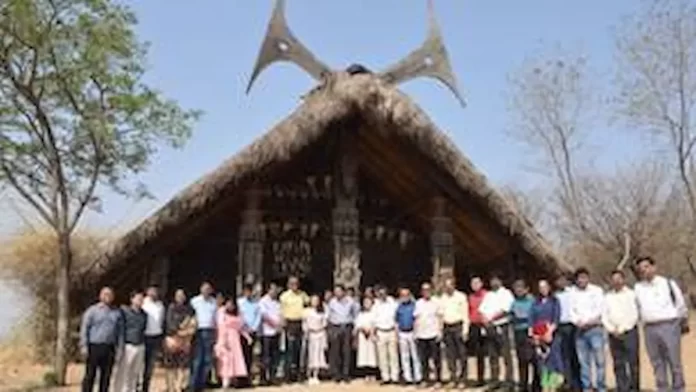A two-day National Workshop was organized at Bhopal recently to speed up the development of the National Tribal Freedom Fighters’ Museums near the Statue of Unity, Gujarat.
During the workshop, More than fifty experts comprising of historians and researchers associated with tribal history, anthropologists, filmmakers, curators, artists, and experts associated with the development of museums had detailed discussions with directors and representatives of Tribal research Institutes of different states where tribal museums are being set up.
National Tribal Freedom Fighters’ Museum
It may be recalled that on 15th August 2016, in his Independence Day speech at Red Fort, Prime Minister Narendra Modi, had announced to establish tribal freedom fighters’ museums to acknowledge the contributions of tribal unsung heroes to the national freedom movement.
Consequently, the Ministry of Tribal Affairs has sanctioned ten Tribal Freedom Fighter museums to be located in Gujarat, Jharkhand, Andhra Pradesh, Chhattisgarh, Kerala, Madhya Pradesh, Telangana, Manipur, Mizoram, and Goa.
On 15th November 2021 on Janjatiya Gaurav Diwas, Bhagwan Biswa Munda Tribal Freedom Fighter Museum in Jharkhand was dedicated to the nation by PM, Shri Narendra Modi.
The museum that is being set up at Gurudeshwar in Narmada District would be the National Museum wherein 16 major Galleries will be dedicated to tribal freedom movements across India.
The museum under construction is about 6 km from the statue of Unity.
National Level Committee meetings
Since 2017, there have been 13 National Level Committee meetings that have given their recommendations on the civil and curational aspects of these museums.
The National Level Committee (NLC) had met last time at Garudeshwar where the Secretary Ministry of Tribal Affairs and Secretary, Ministry of Culture, New Delhi, and experts from different areas had given suggestions for the national museum.
Pursuant to recommendations of the NLS, the workshop at Bhopal was organized.
In the workshop, a discussion took place on key issues related to the development of the content and storyline of each tribal movement. The architectural design is to be in sync with the whole theme/storyline.
Threadbare discussions were held with each State to acquaint and align them with ground realities, authenticity, and actual importance of content, ensure proper convergence of knowledge, resources, and expertise, leveraging of technology corresponding to international standards; concurrent upgradation of technology, and landscaping of area required with a focus on the storyline in sync with architecture were also areas of discussion.
5 regional committees were formed with experts from different fields who will help develop and approve the Content Development and Search cum Selection of artifacts, and identify artisans and material to expedite the curatorial planning and execution of the project.
There was an intense discussion with experts about the various aspects of the museum and different points of view with regard to content, curation, and civil structure. The experts gave various recommendations.
Rashtriya Manav Sangrahalaya (RMS), Bhopal
Many experts from different backgrounds had associations with Rashtriya Manav Sangrahalaya (RMS), Bhopal.
The participants also visited RMS which has linkages with curational artists across India. The experts from RMS offered to provide their expertise and services in the development of these museums and it was suggested that the expertise available with RMS should be suitably utilized.
Prof. Subhadra Channa, University of Delhi, also emphasized foregrounding tribal voices in the museum, presenting multiple authors’ perspectives in a narrative, and keeping the museum space organic and evolving.
Further, she discussed the idea of a ‘sacred space’ and proving multisensory exposure to visitors, such as the use of the smell of forests and tribal food and tribal songs in the galleries.
Dr. KK Mishra, an anthropologist, academician, and ex-director of IGRMS, Former Vice-Chancellor, Utkal University of Culture, Bhubaneswar suggested laying special emphasis on narrative and community involvement.
He also mentioned that the representation of the tribal freedom movement must be concerning time and space. The storyline needs to be exhaustively studied before being showcased in the museum.
It was decided to have a regional workshop so that the learnings from the workshops and the progress of different museums could be monitored in line with the discussion during the workshop.
